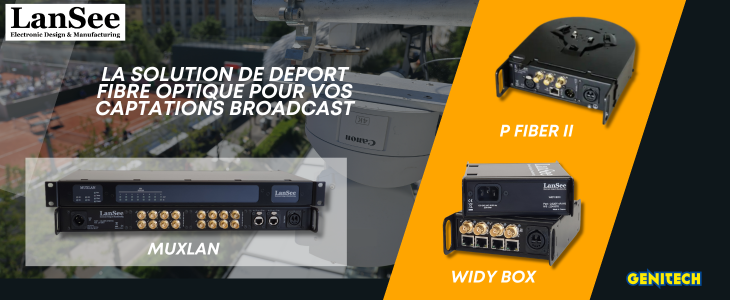Contacts
Pour obtenir des informations, effectuer un devis et/ou nous localiser.
Cliquez ici
SONY Beamforming Microphone MAS-A100
Ref: SONY Beamforming Microphone MAS-A100The MAS-A100 is a state-of-the-art speech reinforcement* and recording solution. Attaching and positioning lavalier microphones is time-consuming, and handheld microphones restrict movement. However, the Beamforming Microphone is simply affixed to the ceiling, then ready to use – leaving the orator location-free, hassle-free and hands-free to focus on presenting.
*Loud speaker system is required for speech reinforcement
Dedicated channels for speech reinforcement and recording
Our comprehensive solution employs audio volume stabilisation and clear audio processing to produce sharp recordings. The MAS-A100 has two channel outputs. The dual output channel enables speech reinforcement and recording simultaneously. The dedicated rec channel records with a wider capture range and optimal intelligibility – perfect for lecture capture.
Simple installation and management
Supporting Dante and PoE, MAS-A100 links with third-party systems via a single cable connection. Auto-calibration streamlines system configuration, and settings can easily be adjusted via the network using free MASM-1 management software. With simple settings, central management and no need to monitor battery use, MAS-A100 is a convenient classroom audio solution.
Volume 10%
Beamforming and Intelligent Feedback Reducer
The integration of beamforming technology and our market-leading Intelligent Feedback Reducer produces clear audio with hands-free speech reinforcement, leaving the presenter hands-free. Sony’s high-performance digital signal processing and unique algorithms extract speech sound while supressing unwanted feedback (howling).

Noise reduction
Our Beamforming Microphone incorporates advanced noise reduction technologies to minimise ambient noise. Stationary background noise arising from projectors and air conditioning are automatically detected and reduced to achieve clear sound resulting in better intelligibility and, ultimately, better understanding for listeners.

Automatic gain control
The MAS-A100 has a useful inbuilt volume normalisation feature to maintain stable volume regardless of the distance between the presenter and the microphone, leaving the presenter free to move around the space without the audio quality deteriorating. Automatic gain control adjusts the strength of the signal received to ensure clear and consistent sound for easy listening.

Automatic calibration
The Beamforming Microphone optimises the parameters of audio processing for speech reinforcement automatically. The microphone generates a test signal, which is captured by the loud speakers. The system then calculates and configures the parameters for speech reinforcement. This calibration is required only on initial installation, minimising time-consuming set-up and system maintenance.
- Generate test signal
- Capture test signal from loud speakers
- Calculate and configure optimal parameters for speech reinforcement

Microphone Array System Manager (free download)
Our comprehensive solution includes free Microphone Array System Manager software (MASM-1). The software supports installation and configuration of initial settings, as well as monitoring, operations and firmware management. MASM-1 is a total management solution, enabling users to manage multiple microphones in multiple locations centrally and easily via the local network.

System setup


Additional features
Dante® and PoE compatibility
The MAS-A100 is compatible with third-party Dante mixers, converters and other devices, as well as power over ethernet (PoE). There’s no complicated wiring – a single cable can connect the microphone to the system.
![]()
Status LED
The microphone has an inbuilt status LED, enabling both instructor and operator to easily recognise the microphone status.
![]()
API
Our Beamforming Microphone can be operated by API, permitting simple external control and customisation as well as linking with existing systems.
![]()






